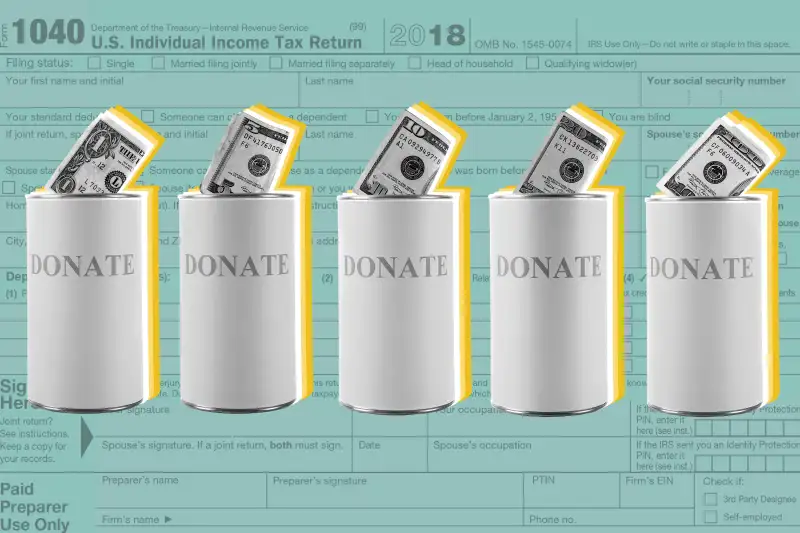A Big Tax Break for Charitable Giving Disappeared. Here's What You Can Still Do

The 2017 Tax Cuts and Jobs Act may have made it harder for many taxpayers to write-off their charitable contributions, but there are ways to get more bang from your charitable buck in this new environment.
Your approach will depend in part on your age.
In order to write-off qualifying charitable contributions, you need to itemize your deductions, rather than take the standard deduction -- that’s the fixed chunk of money that the IRS allows you to deduct from your income before you pay taxes on the remainder. Taxpayers generally itemize if their sum of the deductions -- including expenses like mortgage interest, state and local taxes and charitable spending -- exceeds the amount they are allowed to write off by taking the standard deduction.
The Tax Cuts and Jobs Act, which went into effect for the 2018 tax year, roughly doubled the standard deduction to $24,000 if you’re married filing jointly-- or $26,600, if both spouses are age 65 and over-- and to $12,000 if you’re an individual, while also curtailing some deductions. As a result, experts predict that the number of itemizers will fall from roughly 30% of the tax filing population to under 10%, once Americans have filed their 2018 taxes by April 15.
The upshot is that, while giving to charity remains an honorable and virtuous enterprise, far fewer Americans will enjoy an extra financial incentive to donate -- in terms of a valuable tax write off -- under the tax code.
It’s hard to say definitively what impact this has had on charitable giving so far, says Rick Cohen, Chief Communications Officer for the National Council of Nonprofits.
But tax professionals say they’ve seen people changing their giving strategies in response to the new regime.
For Seniors
If you’re 70 ½ and over, you can donate your required minimum distributions (RMDs) -- the amount that the IRS requires you to withdraw each year from your traditional retirement accounts and pay taxes on -- directly to charity. Michael Landsberg, a financial planner in Atlanta says he saw “a marked increase” in the number of older taxpayers taking advantage of qualified charitable distributions last year.
This charitable approach offers a two-fer: You avoid income taxes on your RMD and help your favorite charities at the same time. You’re allowed to donate up to $100,000 a year this way.
For All Taxpayers
Taxpayers of any age can also bunch their charitable deductions to help them clear the hurdle of the higher standard deduction. Say you used to give $1,000 each to your favorite eligible charities each year, which allowed you to regularly itemize your deductions. Yet rather than giving each charity your usual $1,000, maybe you give $5,000 one year and none the next if, collectively, that increase boosts you into itemized territory for the year. In the off-years, you would take the standard deduction.
If you don’t want your chosen charities to get a big chunk of cash at once, consider opening a donor-advised fund, which is like a charitable investment account that supports your causes. You can generally donate a big amount upfront and take an immediate tax deduction, then have your contribution disbursed to your causes at your chosen pace, says Landsberg, who is a member of the American Institute of CPAs’ Personal Financial Planning Executive Committee. “It’s the best of both worlds,” he says.